 All Our Tours
All Our Tours
Written by: Alice Le
Updated date:26/11/2025
Hello, I’m Alice. I’m a passionate travel expert with years of experience exploring Vietnam, Laos, Cambodia, and Thailand. My journeys through these countries have given me a deep appreciation of their landscapes, traditions, and cultures, which I now share through authentic insights and tailored recommendations. With this expertise, I can design trips that perfectly match your expectations and create truly unforgettable journeys. I’m here to guide you toward unique experiences, crafted just for you.
Contents
Get ready for a journey filled with breathtaking landscapes, mouthwatering street food, and a culture as warm and vibrant as its people. But it can also feel overwhelming if you’re not prepared. This guide covers all tips for first time travellers to Vietnam, helping you navigate everything from money and transport to local customs and safety. With these insider insights, you’ll travel smarter, avoid common pitfalls, and make the most of your time in this incredible country.
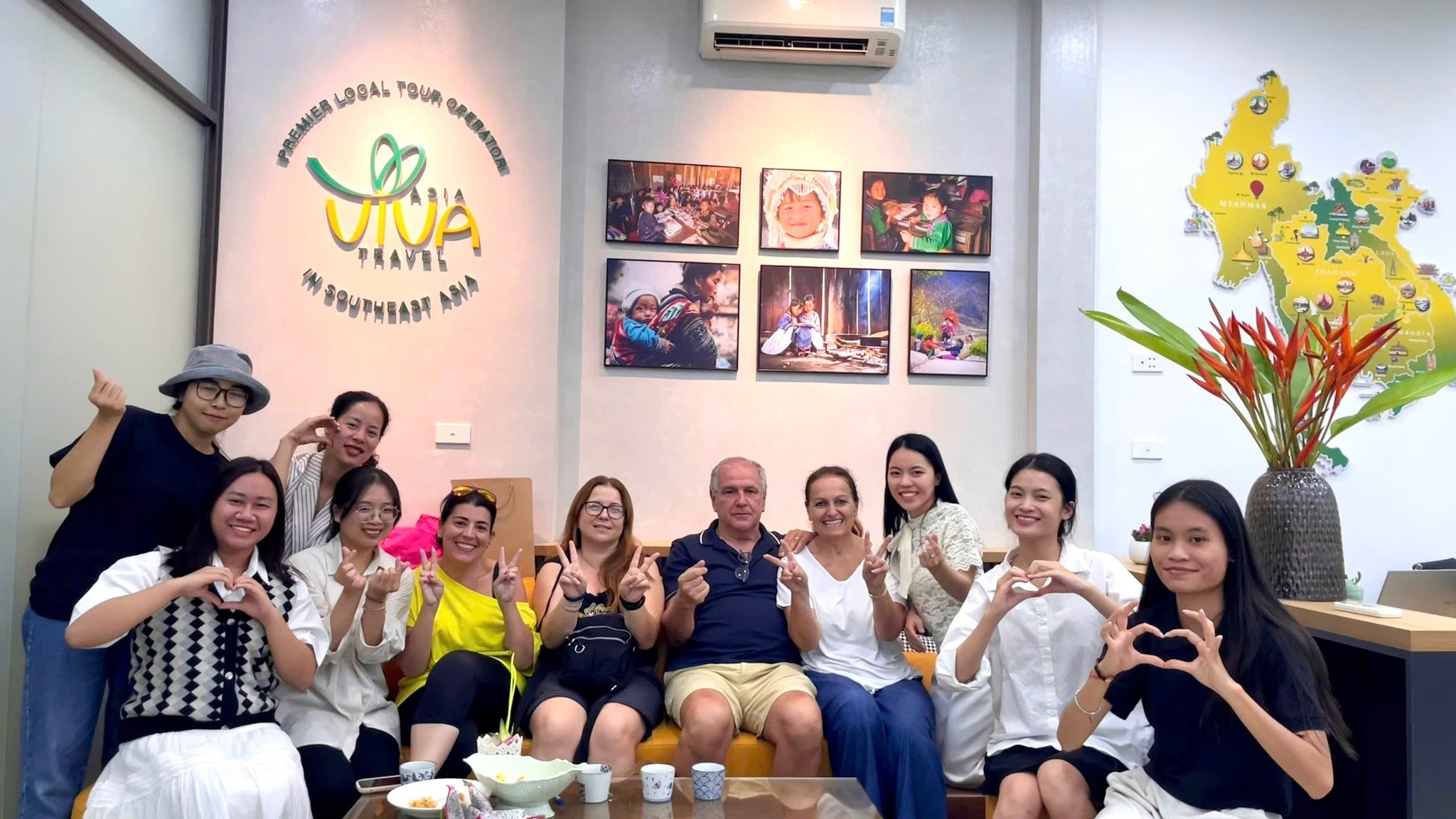
Tips for first time travellers to Vietnam with Asia Viva Travel
Vietnam is generally very safe for walking around at night, especially in major cities like Hanoi, Ho Chi Minh City, Da Nang, and Hoi An. Violent crime is rare, and street life continues well into the evening with bustling night markets, street food vendors, and open-air cafes.
If you’re staying in Hanoi’s Old Quarter, you can comfortably explore at night. From Friday to Sunday nights, the streets around Hoan Kiem Lake become pedestrian-only zones, creating a vibrant, family-friendly atmosphere with street performances, local crafts, and late-night dining.
Night Safety Tips:

Vietnam is safe to travel around at night
Vietnam is one of the more LGBTQ+ friendly countries in Southeast Asia. Same-sex relationships are legal, and in recent years, public attitudes have grown more accepting, especially among younger generations.
In urban areas like Hanoi, Ho Chi Minh City, and Da Nang, LGBTQ+ travelers will find a welcoming atmosphere with a growing number of inclusive cafes, bars, and events. While overt displays of affection might attract stares (more out of curiosity), harassment or violence is very rare.
Key cities and provinces include Hanoi, Ha Long Bay, Ninh Binh, Sapa, Ha Giang, and Cao Bang. Northern Vietnam captures the essence of the country’s cultural and geographic heart, with iconic landscapes, ethnic communities, and historical landmarks like Hanoi, the geological wonders of Ha Long Bay, and lush mountain ranges.

Northern Vietnam Travel map
Explore cities such as Da Nang, Hoi An, Hue, Dong Hoi, and Phan Thiet, spread across the North Central Coast, South Central Coast, and Central Highlands. This region blends imperial heritage, tranquil beaches, and dramatic caves -ideal for travelers seeking both cultural depth and natural beauty.

Central Vietnam Travel map
Home to major cities like Ho Chi Minh City, Can Tho, and the vast Mekong Delta region, Southern Vietnam buzzes with economic energy and rural charm. From the dynamic urban life of Saigon to scenic waterways and floating markets, the south offers a rich contrast of experiences.

Southern Vietnam Travel map
With its diverse geography stretching from misty mountains in the north to sun-soaked beaches in the south, Vietnam’s weather varies widely by region and Vietnam has three main weather zones include:
Vietnam best time to travel is from late November to April. During these months, the weather is generally pleasant, dry, and ideal for travel across the country.
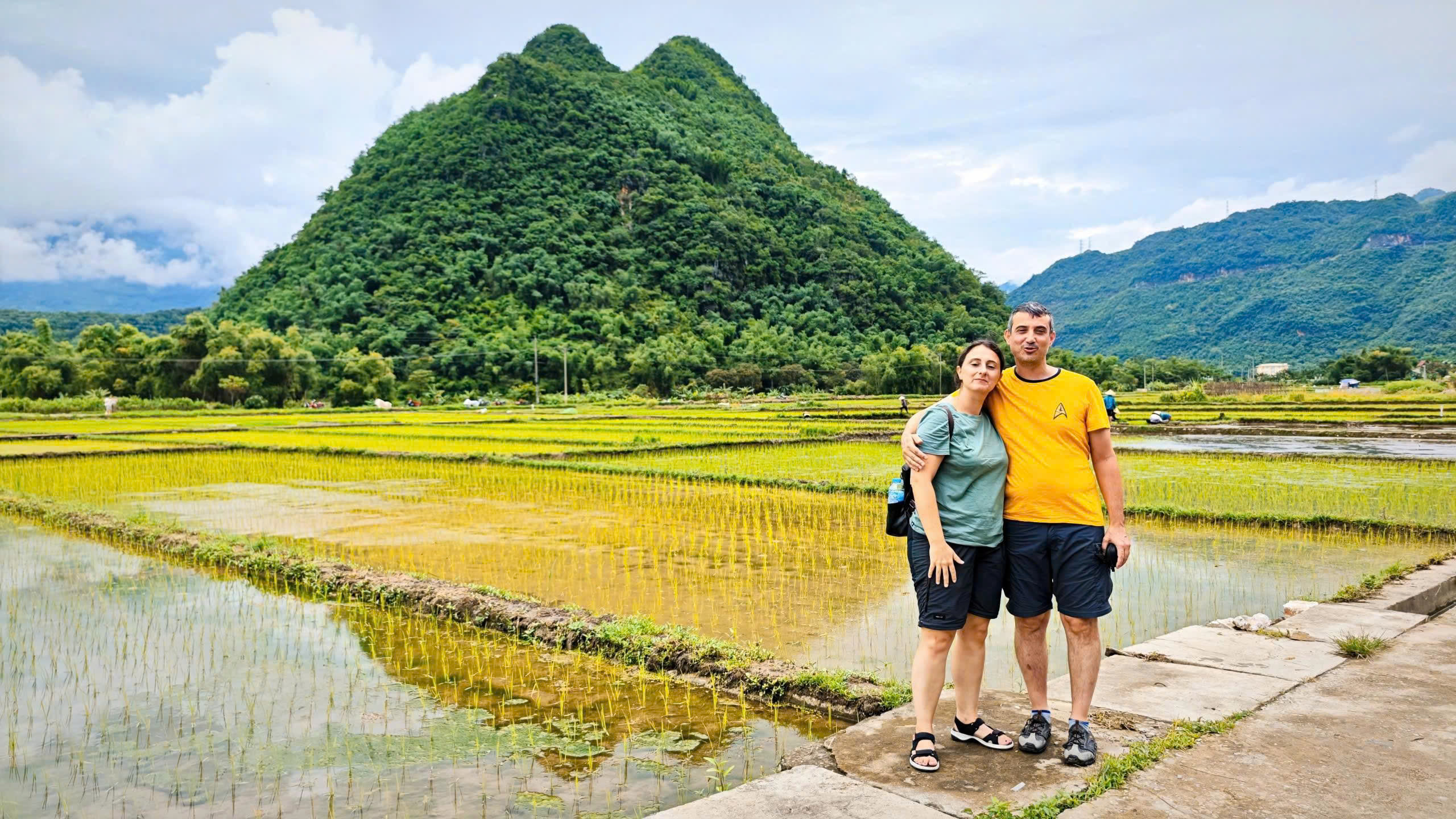
Tips for first time travellers to Vietnam in best time
Most travelers will need a visa to enter Vietnam, but some nationalities are eligible for visa-free entry. If your country is not on the visa exemption list (see below), you’ll need to apply for either an e-visa, visa on arrival, or go through a Vietnamese embassy.
E-Vía is the best choice for tourists from 80+ countries planning short stays (30–90 days) in Vietnam
Validity:
List of Countries That Allowed E-Visa Issuing, including: the United States, Canada, UK, most EU nations, Australia, New Zealand, India, South Korea, Japan, Thailand, Malaysia, Singapore, and more
How to Apply:
E-Visa Entry Points:
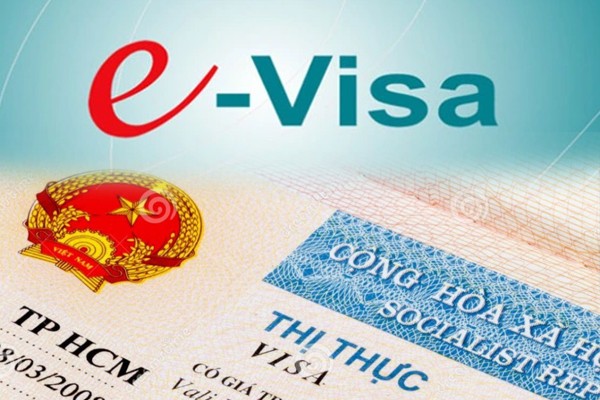
Vietnam E-Visa (Electronic Visa)
It is ideal for air travelers needing longer stays or multiple entries. It’s only available if you arrive by air and have a pre-approval letter from a trusted visa service. Simply apply online, print your approval letter, and upon landing at Vietnam airports like Noi Bai (Hanoi), Tan Son Nhat (Ho Chi Minh City), Da Nang, or Cam Ranh (Nha Trang), present your documents (passport, photos, entry form, and stamping fee) to get your visa. However, tourists should notice that VOA is not available for land or sea entries.
It is best for those entering by land or sea, planning stays over 90 days, or not eligible for an e-visa or VOA.
Application Process:
Staying connected in Vietnam is easy, thanks to excellent mobile coverage and widespread Wi-Fi access. The most popular mobile operators such as Viettel, Vinaphone, and Mobifone, which offer reliable 4G/5G service across the country. While SIM cards are readily available at airports and convenience stores, you should be cautious that many airport SIMs are pre-activated under someone else’s name, which means they could be deactivated at any time. To ensure your SIM is securely registered to you, it’s best to purchase and activate it at an official store.
For convenience, Vietnam travel eSIMs are a great alternative, especially for travelers who only need mobile data and don’t plan on making local calls.
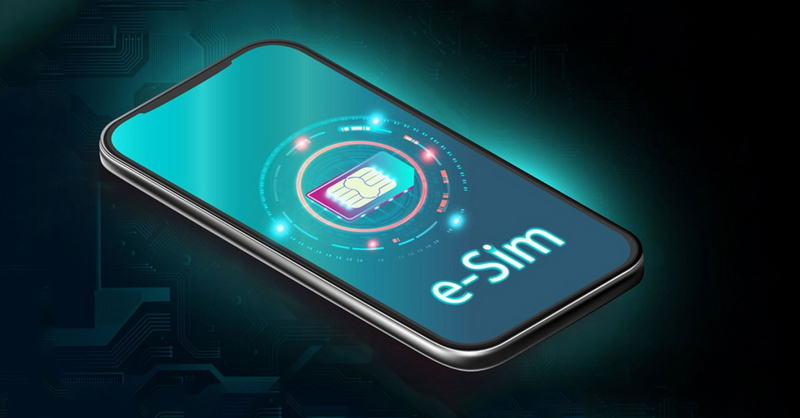
Vietnam travel esim
Moreover, In Vietnam, you’ll find free Wifi connections in most hotels, cafes, restaurants and public areas.
As for charging devices, Vietnam uses 220V, 50Hz electricity with Type A, C, and F plugs, so travelers from the US, UK, or Australia should bring a universal adapter.
How much to tip tour guide in Vietnam? Tipping in Vietnam isn’t mandatory, but it’s always welcomed – especially in the tourism and service sectors. While it’s not a common practice among locals, travelers are encouraged to leave a small gratuity of about $1–$5 for good service, and around $8–$20 for tour guides or drivers. Whether you’re thanking hotel staff, a server, a driver, or a guide, a tip for great service is deeply appreciated. Considering the average monthly income in Vietnam is only $300–$400, even a modest tip can make a meaningful difference.
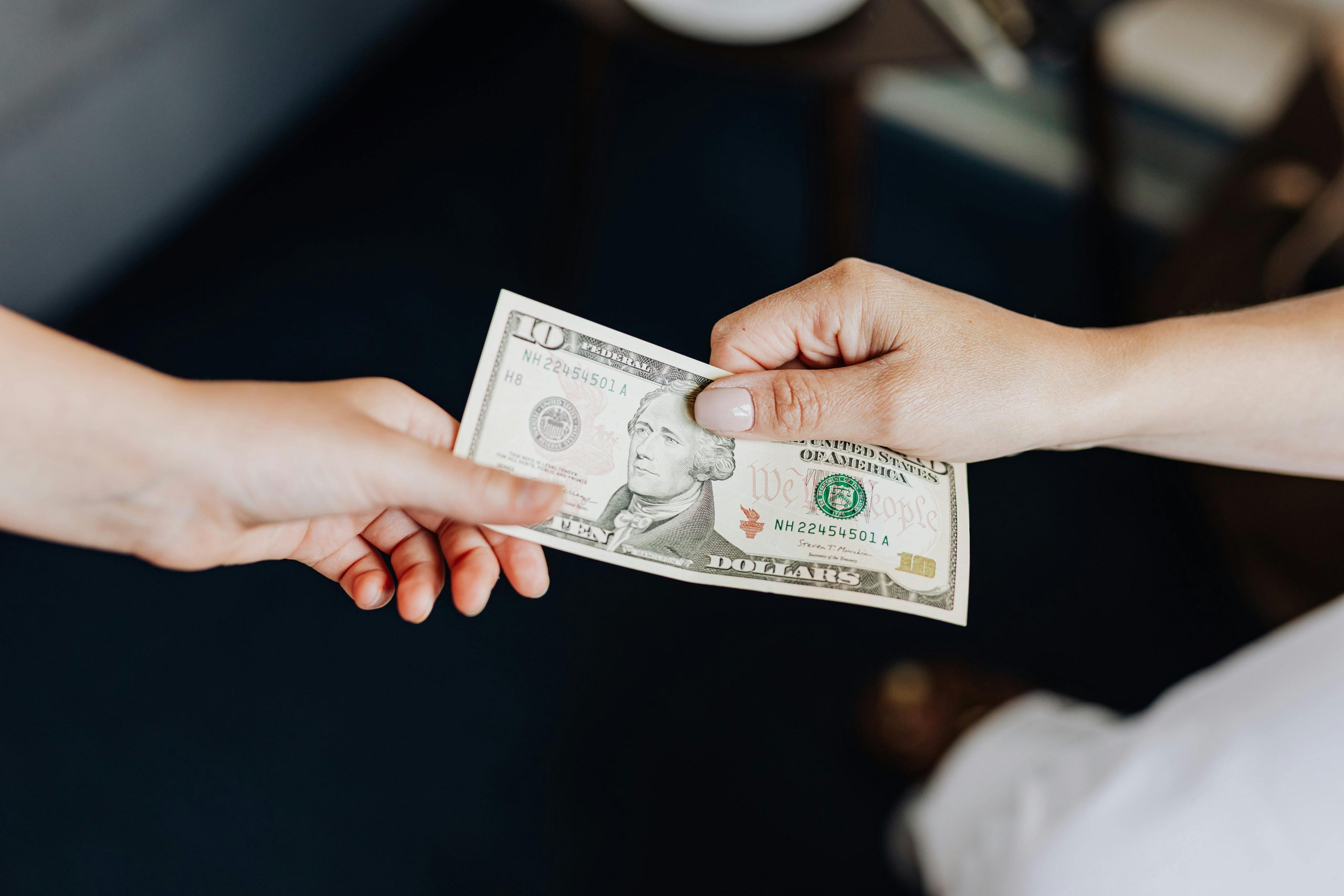
Tipping in Vietnam
Vietnam’s traffic is often described as “organized chaos” – a swirling, nonstop flow of scooters, cars, buses, and pedestrians all moving in surprisingly synchronized rhythm. For first-time visitors, especially in major cities like Hanoi or Ho Chi Minh City, navigating this hectic scene on a scooter can be overwhelming and risky. Unless you’re an experienced rider and confident in unpredictable conditions, it’s safer to admire the fascinating flow of Vietnamese traffic from the backseat of a taxi/ grab. It’s an organic wonder to witness, best enjoyed without the stress of steering through it yourself.
Vietnamese locals have incredible spatial awareness, especially in busy traffic. When crossing the road, the key is to walk slowly, steadily, and confidently – drivers will instinctively adjust their path around you. Avoid making sudden moves or stepping backward, as this can confuse motorbike riders and drivers who are predicting your trajectory. It might feel intimidating at first, but with a calm, consistent pace, you’ll find that the traffic flows around you like water around a stone.
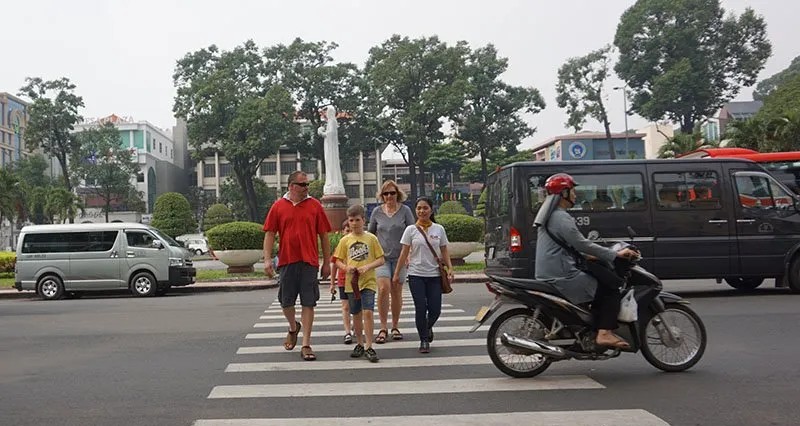
Tips for first time travellers to Vietnam -Crossing the road in Vietnam
In Vietnam, ride-hailing apps like Grab, Be, and Xanh SM are the most convenient and stress-free ways to get around — for both locals and travelers. Whether you’re exploring the city or heading to dinner, booking a car or bike via app saves you from walking under the intense 30-40°C heat and guarantees a more comfortable, air-conditioned ride.
To avoid scams or overcharging, always book your ride through the app, rather than hailing a taxi or motorbike on the street. If a driver asks for added money than the app shows, consider the road conditions or distance first – but don’t hesitate to cancel or report the ride if it feels unfair.
While Vietnam is quickly embracing cashless payments, cash remains the most reliable and widely accepted form of payment, especially at small shops, local markets, and street vendors. Many cafes, restaurants, and hotels now accept bank cards or mobile banking, but having Vietnamese dong on hand is essential for everyday purchases like banh mi, bottled water, or coffee.
Cards (Visa/Mastercard) are generally accepted at larger establishments, though some may charge a 3% service fee. And get ready as they take the card and put it into the machine – it’s not a scam, just how it’s done. The card machine is handed to you for pin and then they need a signature on the receipt. If you’re using a Visa card, you may not need to enter a PIN at all.
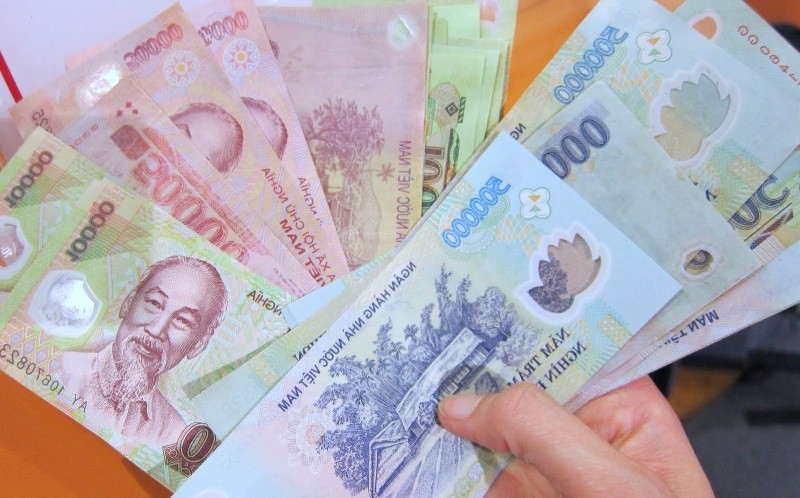
Tips for first time travelers to Vietnam : Cash is king
Visiting Vietnam for the first time? Here’s a compact Vietnam travel guide of essential tips to help you stay comfortable, safe, and make the most of your adventure:
Vietnam is a country that rewards curious travelers – from its bustling markets and rich traditions to its breathtaking natural wonders. With the right preparation and tips for first time travellers to Vietnam, your visit can be smooth, safe, and unforgettable. Embrace the local way of life, stay open to new experiences, and you’ll find that Vietnam’s charm lies not just in its scenery, but in the warmth of its people and the richness of its culture.

 26/11/2025
26/11/2025Visiting Cambodia and Vietnam for stunning landscapes, vibrant cities, ancient temples, and UNESCO World Heritage sites is a complete travel experience for tourists.

 26/11/2025
26/11/2025Visit Da Nang with our detailed guide to the best hotels, resorts, Michelin-starred restaurants, and local street food for an unforgettable Vietnamese getaway.

 26/11/2025
26/11/2025Discover the best Vietnam tour packages from USA and enjoy a safe, unforgettable journey through Vietnam’s culture, beautiful nature, and rich history.

 20/11/2025
20/11/2025Discover the best Hanoi street food tour with our guide, you can explore local favorites, from pho, vegan buffets to kosher-friendly options and Vietnamese coffee.